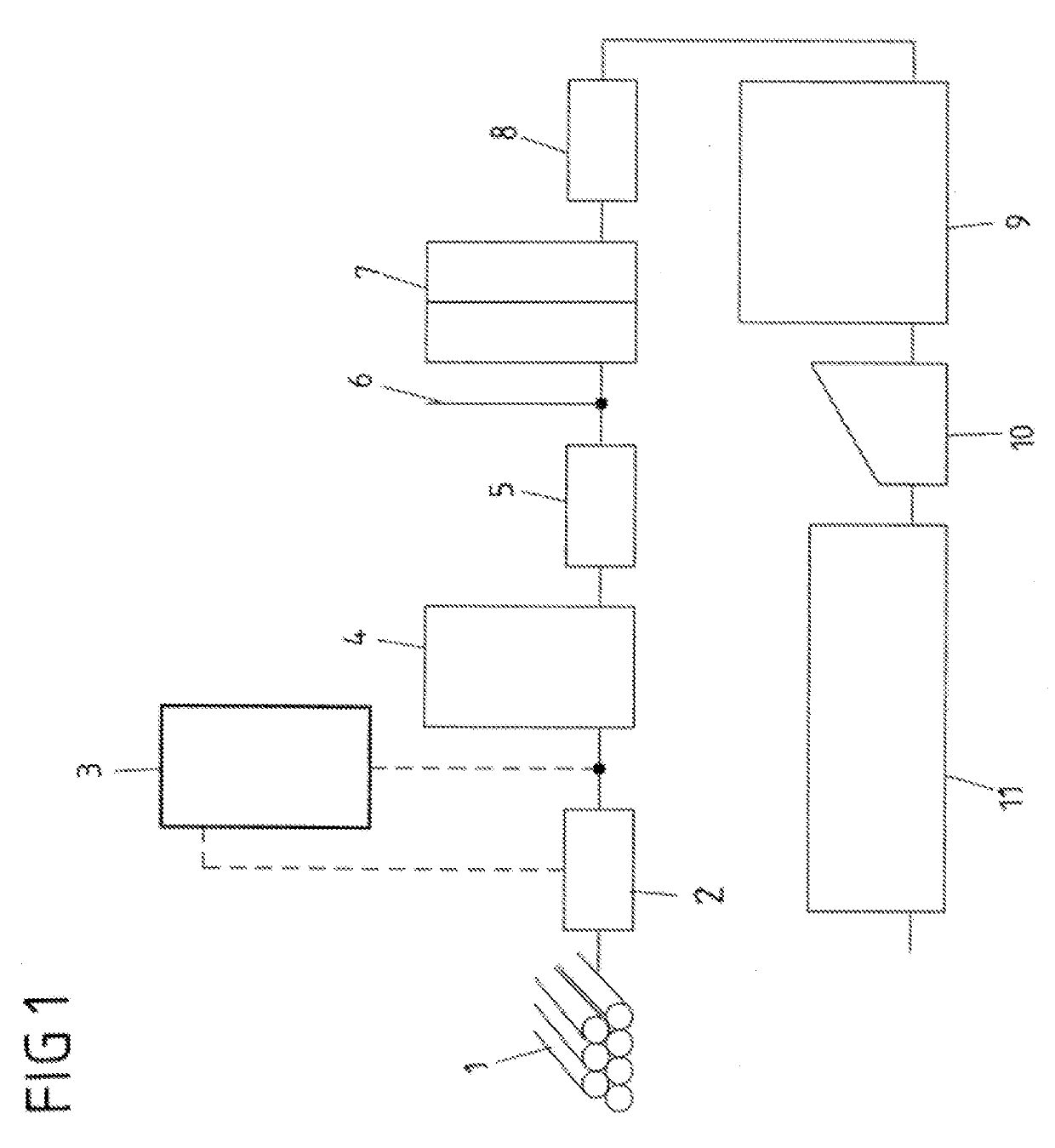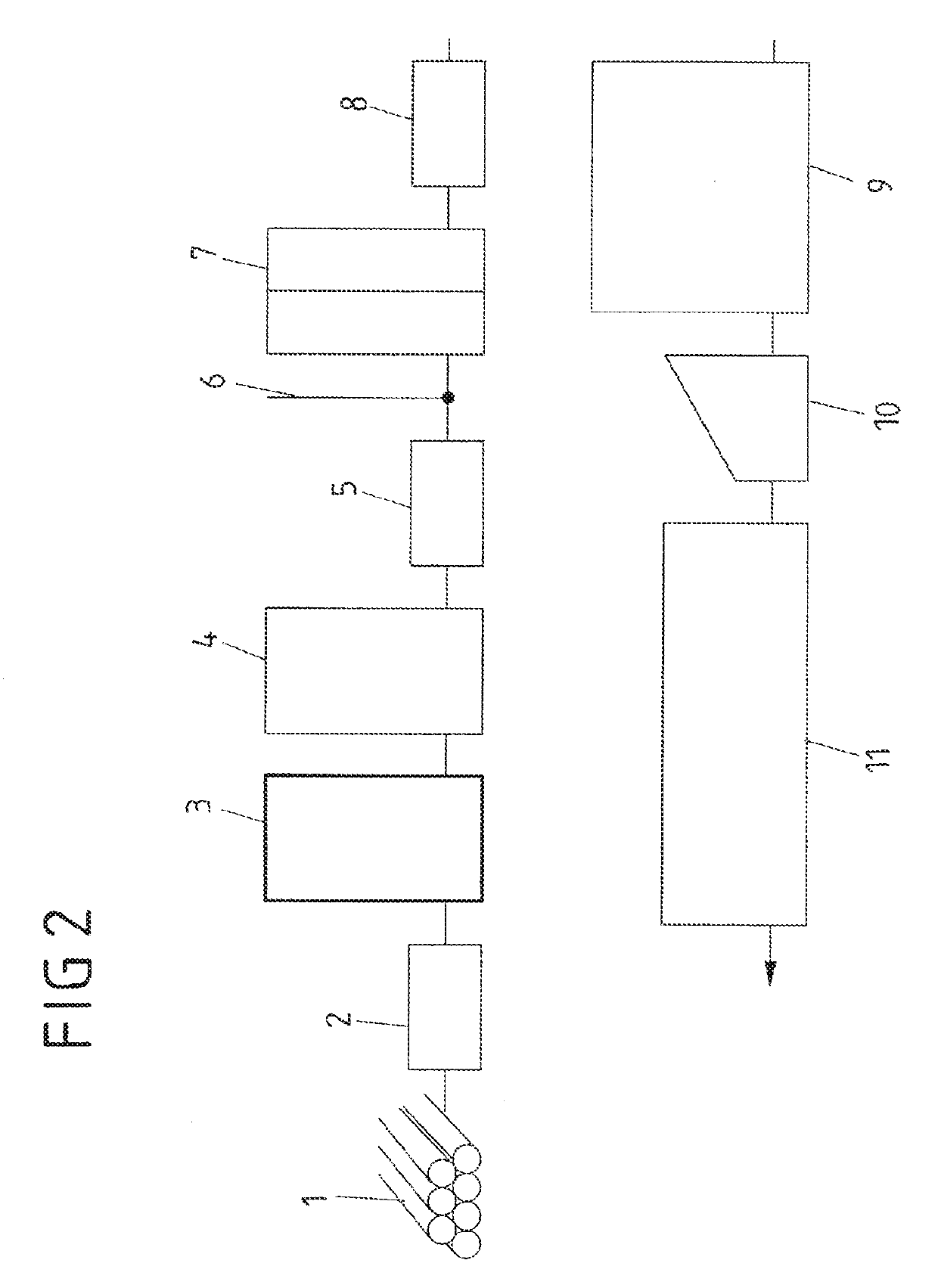Wood material board with reduced emission of volatile organic compounds (VOCs) and method for the production thereof
a volatile organic compound and wood material technology, applied in the field of wood base panels, can solve the problems of limited availability, increased space concentration of wood constituents, and significant overflow of space loading, and achieve the effects of reducing the emission of volatile organic compounds, reducing aldehydes and/or organic acids, and reducing the emission of organic acids
- Summary
- Abstract
- Description
- Claims
- Application Information
AI Technical Summary
Benefits of technology
Problems solved by technology
Method used
Image
Examples
working example 1
Especially MDF
[0114]Wood chips are kept in undried form (moisture content: around 50%, format: around 5×5 cm, thickness: around 1 cm) in a continuous heat-treatment apparatus at 220° C. under saturated steam for around 2 h. The apparatus consists of a conveying apparatus by which the chips are transported through slowly with the aid of a spiral conveyor.
[0115]The chips are subsequently cooled in the chip scrubber and are then supplied for standard fiberizing. In this case, 0.1% of a commercial surfactant was contained in the water of the chip scrubber. This surfactant was added in order to improve the wetting of the hydrophobic chips. The water in the scrubber showed a significantly reduced coloration, and the loading with organic constituents was reduced by around 90%.
[0116]The chips obtained after fiberizing were resinated with a standard commercial urea-formaldehyde resin in the blowline and dried. Then the fibers were scattered and were processed to form an MDF having a density ...
working example 2
[0121]The production of chipboard panels is general knowledge. The wood chips, heat-treated in the same way as for working example 1, are supplied to a flaking device. After flaking has taken place, the wood shavings are dried to a residual moisture content of around 2% in a drum dryer. After drying has taken place, the wood shavings are classified and separated into coarser shavings for the middle layer and finer shavings for the outer layer.
[0122]After having been resinated with urea-formaldehyde resin, the shavings are scattered to form multilayer shaving cakes, with the shavings used in the middle layer having been obtained from heat-treated wood chips, and the cakes are pressed to form panels at temperatures of around 200° C.
[0123]The emissions investigation, carried out in the same way as for working example 1, revealed similarly reduced VOC emission values for acetic acid and for the higher aldehydes.
PUM
 Login to View More
Login to View More Abstract
Description
Claims
Application Information
 Login to View More
Login to View More - R&D
- Intellectual Property
- Life Sciences
- Materials
- Tech Scout
- Unparalleled Data Quality
- Higher Quality Content
- 60% Fewer Hallucinations
Browse by: Latest US Patents, China's latest patents, Technical Efficacy Thesaurus, Application Domain, Technology Topic, Popular Technical Reports.
© 2025 PatSnap. All rights reserved.Legal|Privacy policy|Modern Slavery Act Transparency Statement|Sitemap|About US| Contact US: help@patsnap.com


